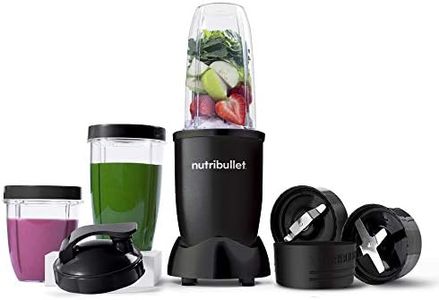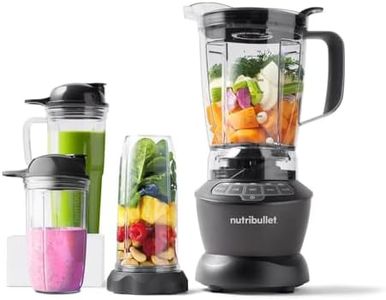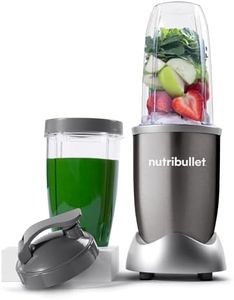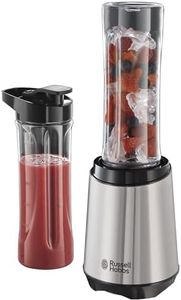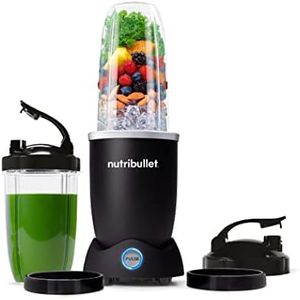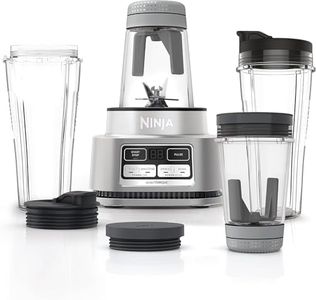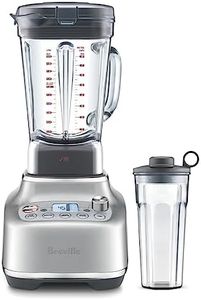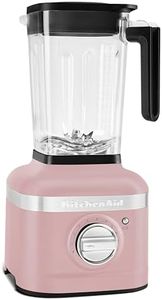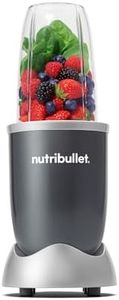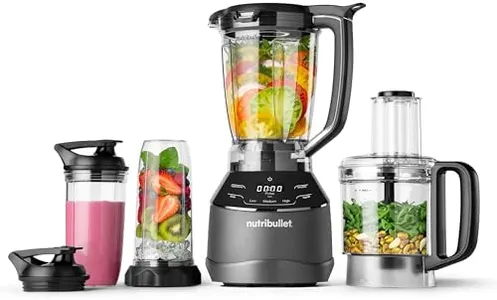We Use CookiesWe use cookies to enhance the security, performance,
functionality and for analytical and promotional activities. By continuing to browse this site you
are agreeing to our privacy policy
10 Best Affordable Blenders
From leading brands and best sellers available on the web.Buying Guide for the Best Affordable Blenders
Choosing the right blender involves thinking about what you’ll be using it for most often—smoothies, soups, sauces, or even crushing ice. Not all blenders are created equal, and each comes with its own set of features. The best blender for you is the one that matches your needs, fits comfortably in your kitchen space, and is easy to use and clean. Focus on understanding the key specifications, and how they translate to everyday use, so you can confidently make a choice that will serve you well.Power (Wattage)Power in blenders is measured in watts and tells you how strong the motor is. This matters because higher wattage means the blender can handle tougher jobs, like crushing ice or making nut butters, without struggling. Blenders generally range from around 200 to 1200 watts. Lightweight tasks like simple smoothies or milkshakes are fine with lower wattage (200–500W), while heavier tasks like ice crushing are best with higher wattage (600–1200W). Think about what recipes you use most; if you mostly blend soft fruits, go for a lower wattage, but if you want to crush ice or blend tougher ingredients, a higher wattage blender is better.
Capacity (Jar Size)The capacity is how much the blender jug or jar can hold at one time. This is important because it determines whether you can make single servings or prepare enough for a group. Blender jars usually range from small (around 16 ounces) to large (up to 64 ounces). If you usually make smoothies just for yourself, a small jar is enough and takes up less space. If you blend for a family, larger jars are more convenient. Think of how many people you typically prepare for, and choose a size that covers your regular needs.
Blade Design and MaterialBlade design refers to the shape and sharpness of the blender’s blades, while the material is usually metal or stainless steel. Blades are what actually chop and mix your ingredients. Sturdy, well-designed blades made of stainless steel are more durable and stay sharp longer, making blending smoother and more efficient. Some blenders have four blades, others six, and more blades often means better chopping, but also depends on their arrangement. If you plan to blend hard items like ice or frozen fruit often, look for strong, stainless steel blades.
Speed Settings and ControlsSpeed settings let you control how fast the blades spin, which affects the texture and smoothness of your blend. Blenders usually come with anywhere from one to several speeds, and some include pulse features for short, quick bursts of power. More speeds give you more control—for example, low for gentle mixing, high for pureeing. If you want simplicity, a single speed may be fine, but for more versatility, look for models with multiple speeds and a pulse button.
Ease of CleaningCleaning is about how simple it is to wash the blender parts after use. This matters because easy-to-clean blenders save you time and are more likely to be used often. Some blenders have dishwasher-safe jars and lids, while others may require hand washing. Also, detachable blades make thorough cleaning simpler. If you want something hassle-free, look for blenders labeled ‘easy to clean’ or with dishwasher-safe components.
Build Quality and DurabilityBuild quality refers to how sturdy and reliable the blender feels—what materials are used for the base, jar, and blades. Durable blenders last longer and withstand frequent use without issues. Plastic jars are lighter and less expensive, but glass jars don’t scratch or discolor as easily. If you plan to use your blender a lot, picking one made with quality materials will pay off in the long run.
Noise LevelBlenders can be quite loud, especially higher-powered models. Noise level is important if you have a small space, roommates, or want to use your blender without disturbing others. Generally, more powerful blenders are noisier. If noise is a concern, look for blenders marketed as quieter, or read reviews to see what other buyers report.
